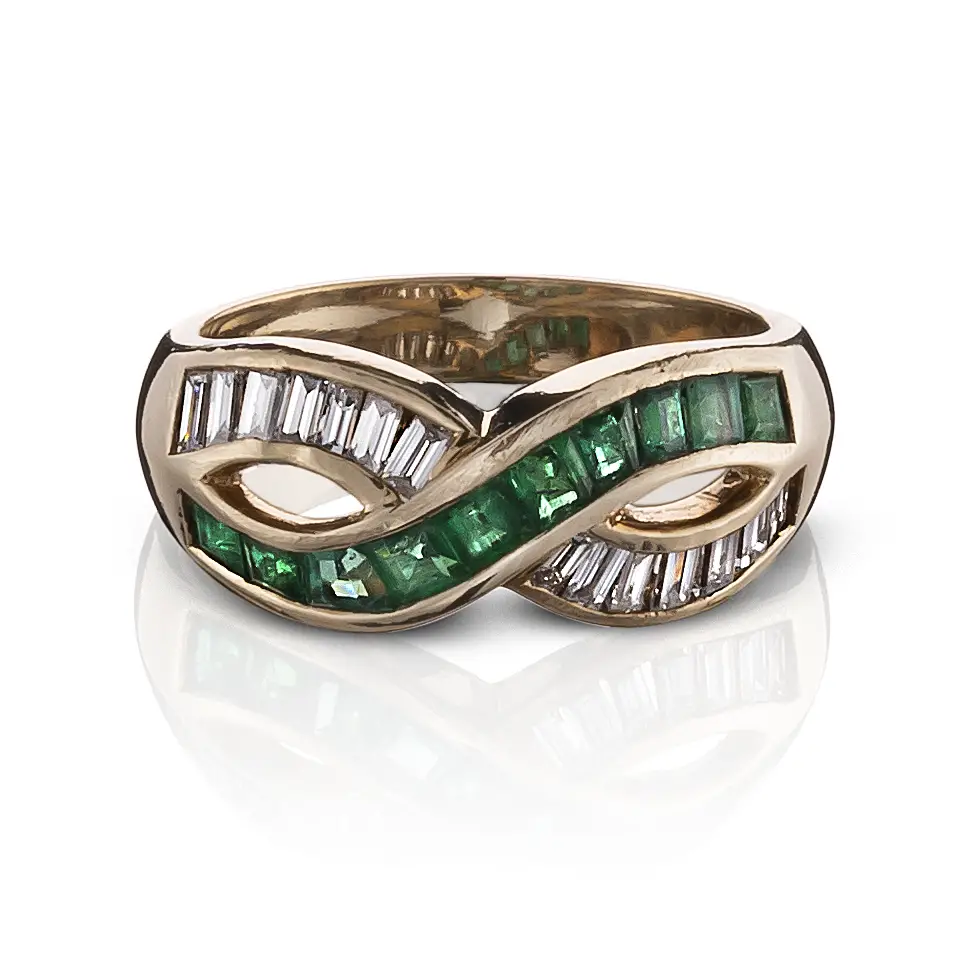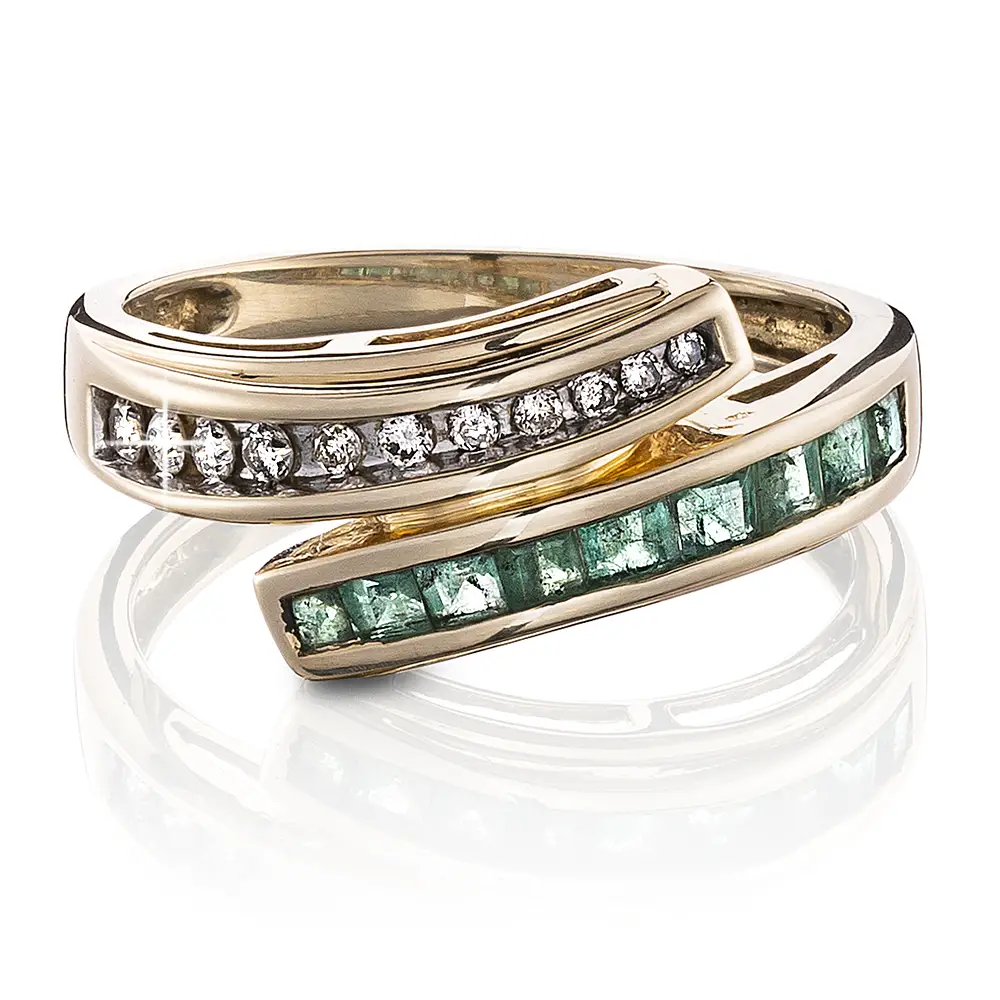Emeralds are one of the most popular colored gemstones in the world after rubies and sapphires. People have been fascinated by their beautiful green color for centuries.
But how much do you really know about these gems?
In this article, we will discuss everything you need to know about how they are graded so that you can understand how their pricing is being determined.
So if you’re interested in learning more about emeralds, read on!
Table of Contents
Where Emeralds Come From
The vast majority of emeralds come from Columbia and Zambia.
There are other sources of emeralds, such as in Madagascar, the Yukon territory of Canada, and Brazil but they are not in notable amounts.
Emeralds have also been found in the USA in 5 states.
Connecticut, Montana, Nevada, N. Carolina and S. Carolina. Emeralds can be found in a variety of rock types that include shale and limestone.
If you want to know more, check out our article on where emeralds are from and how to get them.
What Are Emeralds Made From?
Emeralds are made from beryl and they get their green color from trace amounts of chromium and/or vanadium.
Ruby also gets its red color from chromium too, except in greater amounts.
Unlike other precious stones, emeralds only come in green, although their hues can range in different shades.
The most desirable emerald colors are bluish-green to green with a vivid saturation and a medium to medium dark tone.
The light green emeralds are not considered to be emeralds but instead, are called by their technical name of green beryl in a successful attempt to keep emerald color within a definitive darker green color guideline by the trade.
Emeralds grow in a hexagon cylinder shape and are expected to have a good amount of inclusions present.
Unlike diamonds, inclusions do not typically reduce the value of an emerald in any significant role.
Ninety nine percent of natural emeralds have inclusions, so if you find one that does not, it is likely synthetic.
Inclusions are formed of gasses and other minerals and crystals, as well as liquids that emeralds acquire during the crystallization process.
These inclusions are often viewed as desirable features and can create attractive patterns which will actually increase the value of the stone.
Emerald clarity is usually assessed with the naked eye rather than through magnification.
They have a hardness of 7.5 to 8 on the Mohs scale.
When it comes to the quality of emeralds, the 4 C’s are what is considered:
What Affects The Quality of Emeralds?
The quality of emeralds are affected much the same as in other fine gemstones except for where “clarity” is concerned.
Clarity represents the translucency of a gemstone, that is, how it is able to allow light to pass through the stone, or if it is more or less opaque which means that it will not allow any light to penetrate.
Diamonds are expected to have a clarity that is unrivaled to any other gemstone in that the inclusions should be totally hidden from the naked eye, and even from a 10 power magnification.
Here are some of the guidelines that will affect the quality of emeralds, which will also determine the price that you can expect to pay:
Color
Emeralds are expected to be found in a medium to medium dark green color.
Just like Goldilocks, not too dark, and not too light. Colombian emeralds also appear to have an iridescence glow that is unmistakable.
Emeralds have a secondary hue of yellow and blue, and to give you an example of how much color tone an emerald should have, a fine emerald will be 75% tone in a range that goes from colorless at 0% to black at 100%.
Cut
While emeralds can be found in different shapes, the most popular cut for emeralds is the step cut or the trap cut. This has been the name that the classic emerald cut had taken on.
In this cut, the gem has a distinct table with rectangular faces on the crown as well as the pavilion, running parallel to the girdle. The facets are sometimes square with truncated corners.
Clarity
Like diamonds or other gemstones, clarity refers to what the gemstones look like on the inside. However, unlike diamonds, emeralds are expected to have inclusions that would be totally unacceptable in a diamond.
These inclusions include small bits of gasses, minerals and crystals and even liquids that the emeralds take on during the crystallization process.
99% of emeralds have inclusions and they are graded in three different types when speaking of them.
- Type 1 is “almost inclusion free”
- Type 2 is “usually included”
- Type 3 is “almost always included”
Even though it is expected for emeralds to have inclusions such in Type 3, too many inclusions can compromise the durability of the stone and also devalue it if they are too close to the surface.
Carat
Of course, the larger and more weight of a gemstone, the higher the price will be, all other factors considered.
But with emeralds, the color and translucency is very important in determining value because an emerald that is not the color of an emerald might as well be just “green beryl”.
What Makes Emeralds So Expensive?
The top colored gemstones in the most demand are ruby, sapphire and emeralds.
Although diamonds have been “chosen” as THE stone for wedding/engagement rings, colored stones can rival them if they have a good quality.
People instinctively know that anyone can get a diamond because they are saturated in every jewelry store and even in every department store.
But to find a great emerald among so many diamonds is not common at all.
Some people have never even seen a quality emerald, but have seen plenty of lifeless ones. The expense of an emerald will, like other colored stones, be based on its rarity and quality.
Emeralds that reach higher grades, because they are among the rare colored gemstones, are worth every bit as much as diamonds of high end quality.
Emeralds can be worth anywhere between $1 to $100,000 per carat just like rubies and sapphires can be too!
FAQ’s About Emeralds
Do emeralds break easily?
Emeralds do break easily as they are the softest precious gemstone at 7.5 on the Mohs scale (compared to diamonds at 10 which is the hardest).
It is best to wear them as a necklace or earrings where they won’t get bashed and chipped or cracked.
Rings and bracelets are the first to have mishaps, so you can always wear Tsavorite garnet with your emeralds since they look so much alike.
Why are raw emeralds so cheap?
Raw emeralds, as with any gemstone that has not been faceted and cut to a shape are going to be less expensive than those that are.
This is simply because there is less labor costs to consider given that there are no stone cutters involved.
Emeralds are soft and easy to break, so stone cutters must be even more careful as this makes faceting an emerald much more intensive to do.
Buying an emerald raw means that you saved the seller all the risks involved in cutting, so of course, you can get it cheaper.
Is Emerald worth more than diamond?
Emeralds are said to be worth more than diamonds, but as with everything, only to a limit.
The larger a diamond or emerald is, and the higher the quality, the more competitive the pricing will be between the two stones.
It helps if an emerald is very large and of excellent quality, surrounded by high quality diamonds and is owned by someone famous, because part of marketing gemstones is touting the famous people who own them.
Is emerald a good investment?
We do not believe that any gemstone or diamond is a good investment.
Yes, we, a jewelry store (with fantastic one-of-a-kind estate jewelry), said that. If you want to invest, try gold instead…physical gold, not paper gold.
Jewelry does have value, but most of that value is in the sentiment that it evokes which is why diamonds always stay on top of the advertising heap among all other gemstones.
The more money spent on marketing, the higher the price they can ask.
However, once you walk out of a jewelry store with your gemstone jewelry, diamonds included, they immediately lose value much the same way a new car does once you drive it off the lot and take it home.
Final Thoughts
It may be high time to consider colored gemstones to put some pizazz in your life!
When we shop for clothes, when we make a meal, when we plant flowers in our landscaping, we go for the various colors don’t we?
Our jewelry collections should not be confined simply to diamonds with no other colors of gemstones anymore than our wardrobes should just be all black.
And emeralds, with their lovely green color, should not be so elusive that we only see them in pictures.
After all, variety is the spice of life! Emeralds are a great way to add some spice to your jewelry collection.



